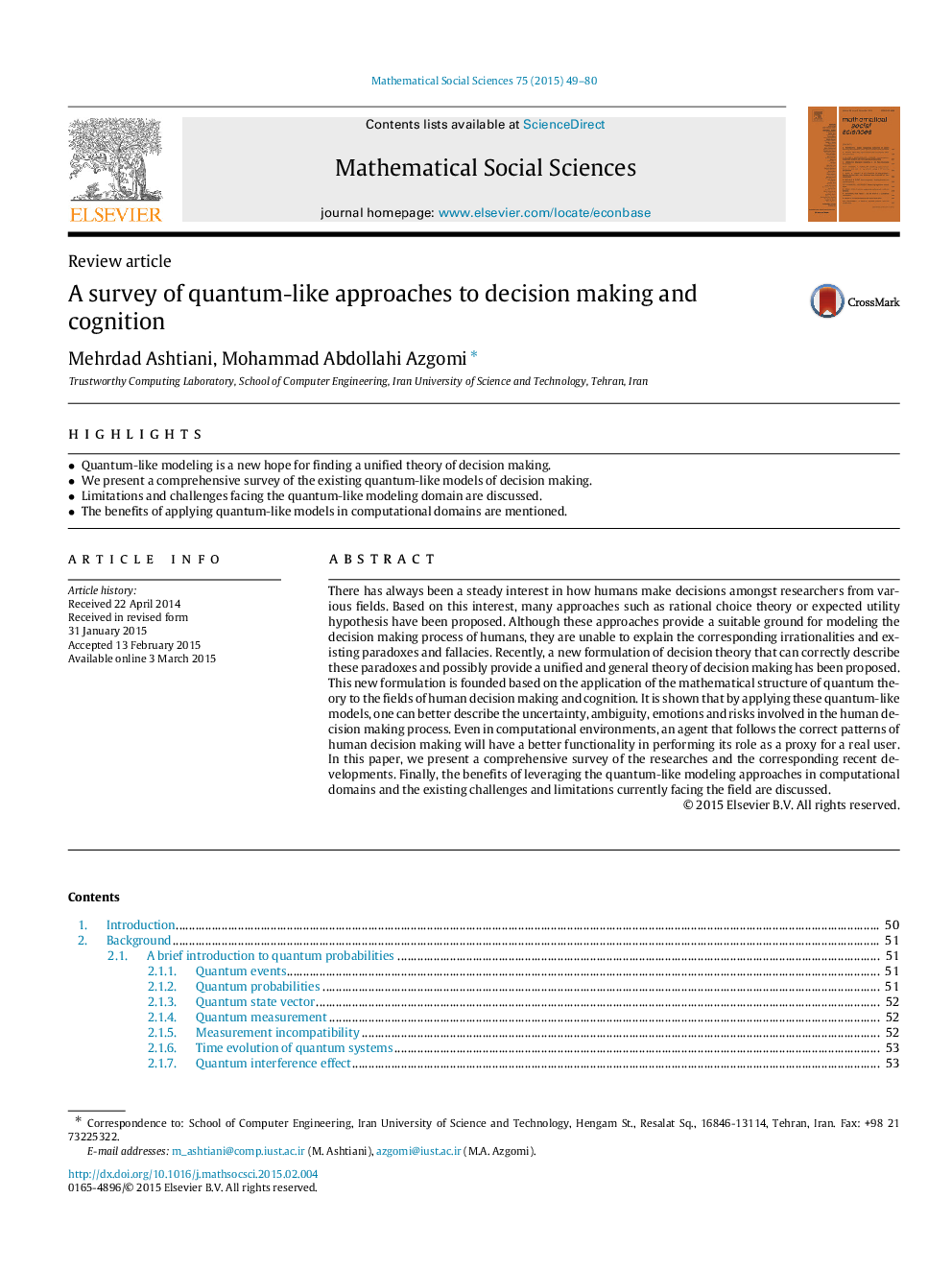| کد مقاله | کد نشریه | سال انتشار | مقاله انگلیسی | نسخه تمام متن |
|---|---|---|---|---|
| 972531 | 1479743 | 2015 | 32 صفحه PDF | دانلود رایگان |
• Quantum-like modeling is a new hope for finding a unified theory of decision making.
• We present a comprehensive survey of the existing quantum-like models of decision making.
• Limitations and challenges facing the quantum-like modeling domain are discussed.
• The benefits of applying quantum-like models in computational domains are mentioned.
There has always been a steady interest in how humans make decisions amongst researchers from various fields. Based on this interest, many approaches such as rational choice theory or expected utility hypothesis have been proposed. Although these approaches provide a suitable ground for modeling the decision making process of humans, they are unable to explain the corresponding irrationalities and existing paradoxes and fallacies. Recently, a new formulation of decision theory that can correctly describe these paradoxes and possibly provide a unified and general theory of decision making has been proposed. This new formulation is founded based on the application of the mathematical structure of quantum theory to the fields of human decision making and cognition. It is shown that by applying these quantum-like models, one can better describe the uncertainty, ambiguity, emotions and risks involved in the human decision making process. Even in computational environments, an agent that follows the correct patterns of human decision making will have a better functionality in performing its role as a proxy for a real user. In this paper, we present a comprehensive survey of the researches and the corresponding recent developments. Finally, the benefits of leveraging the quantum-like modeling approaches in computational domains and the existing challenges and limitations currently facing the field are discussed.
Journal: Mathematical Social Sciences - Volume 75, May 2015, Pages 49–80
